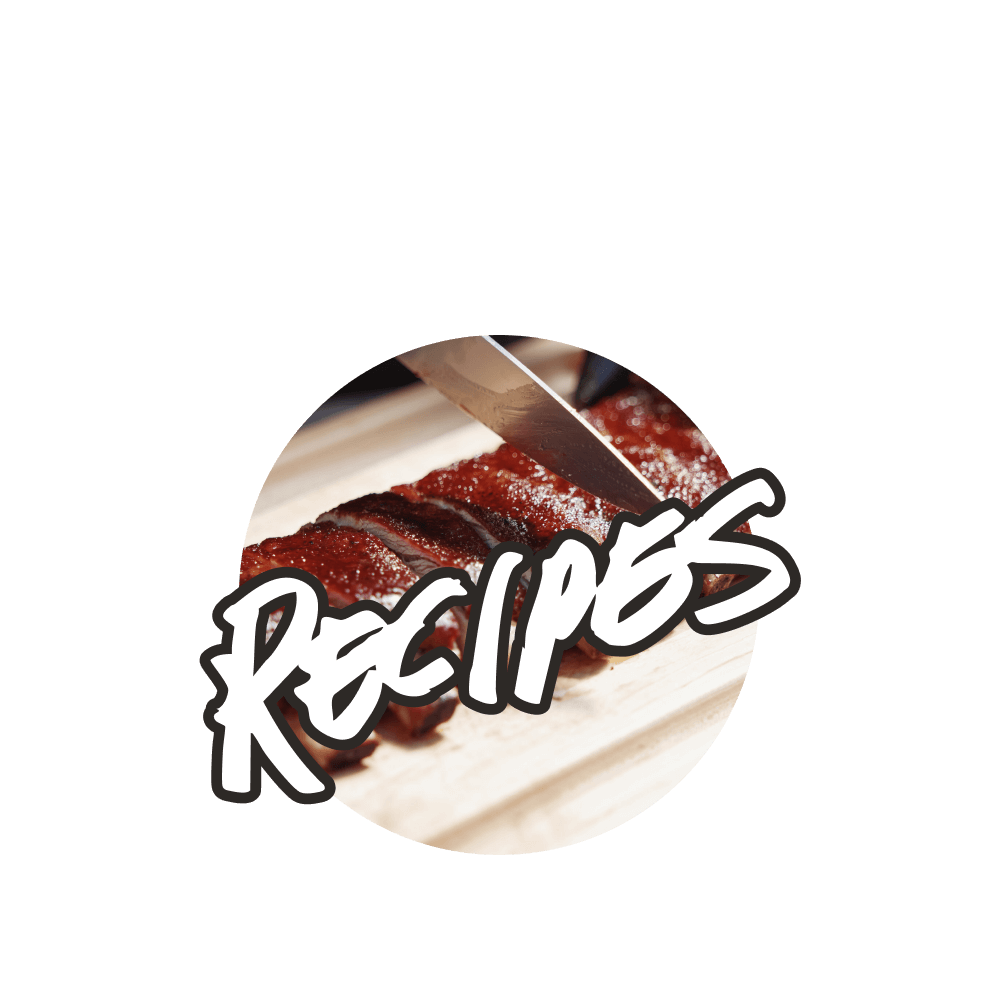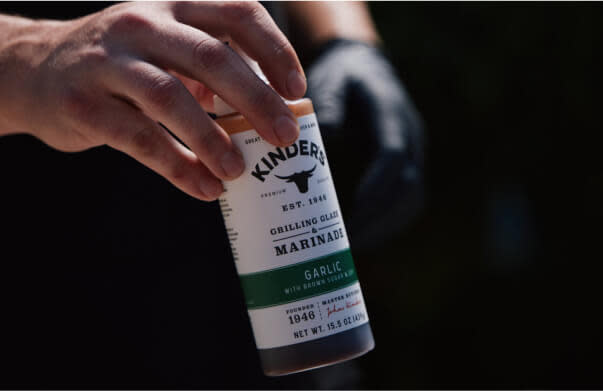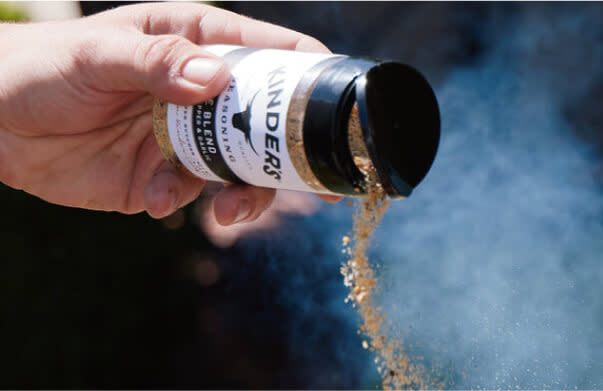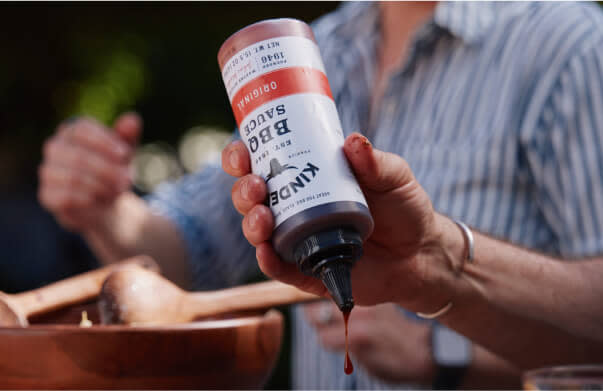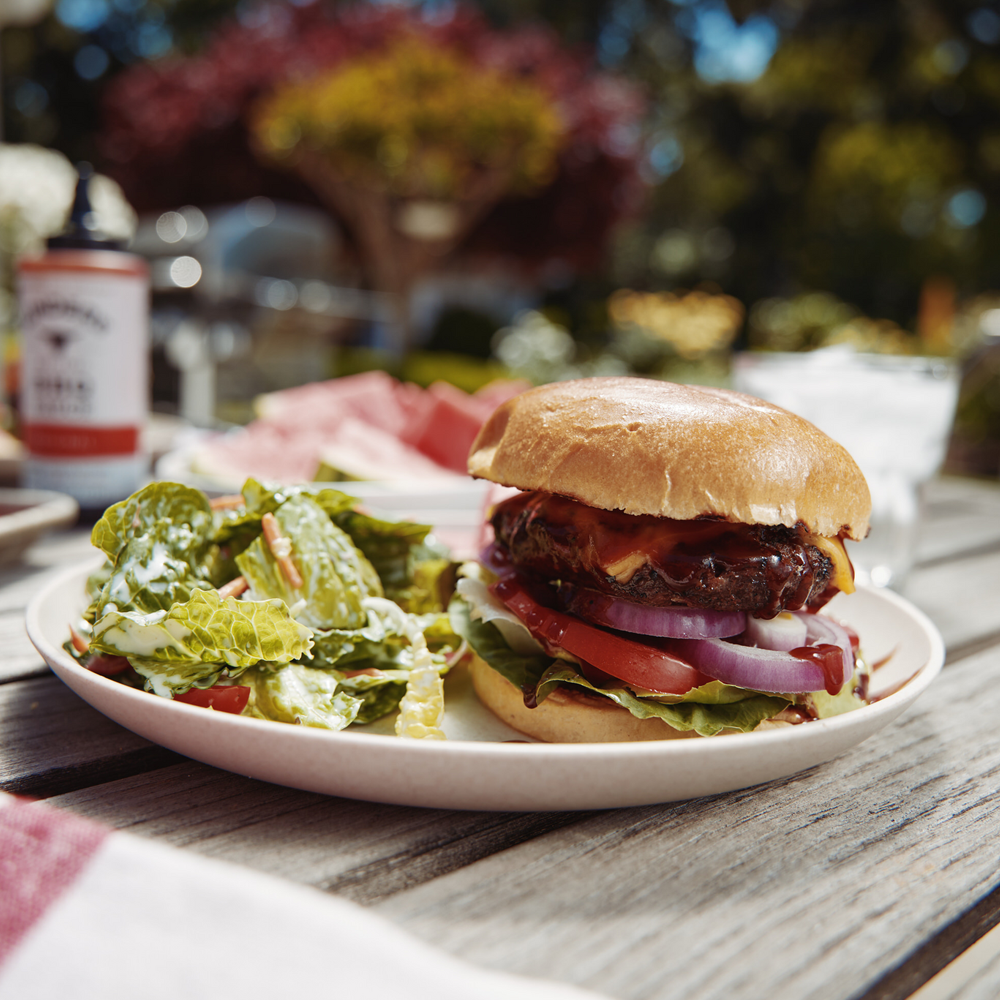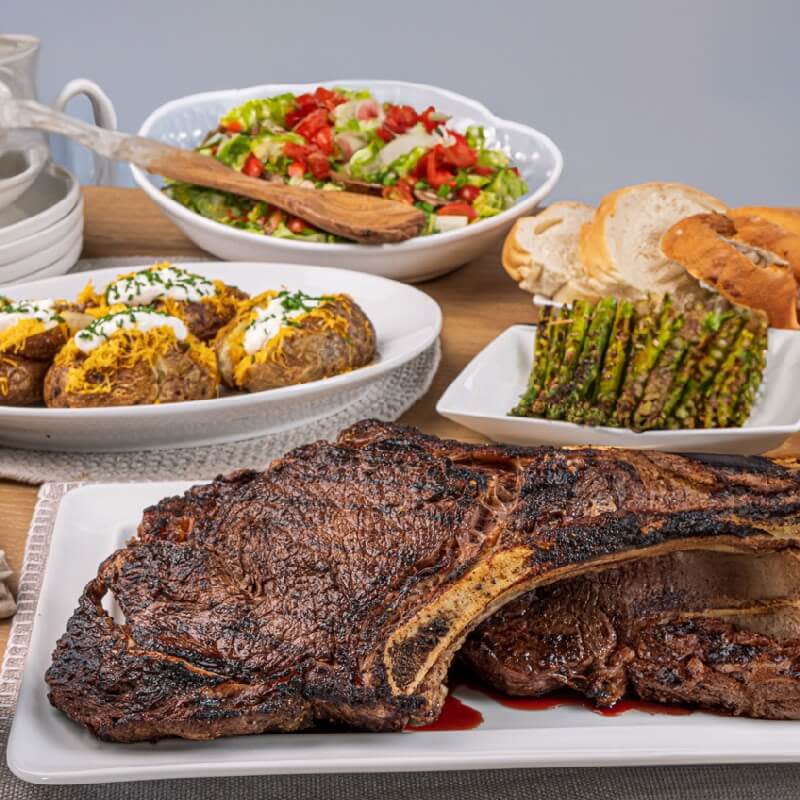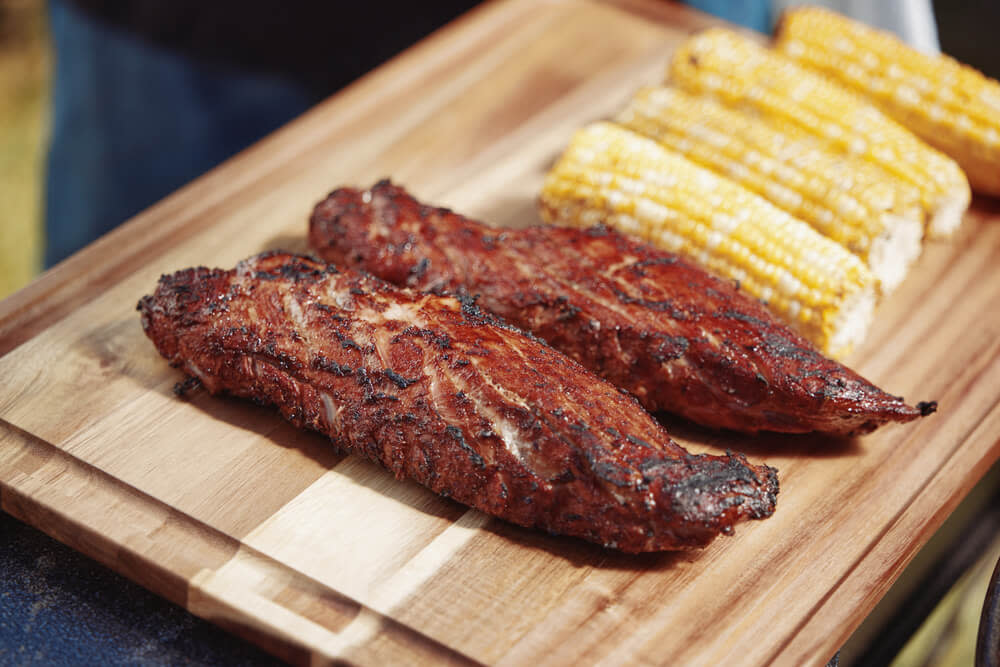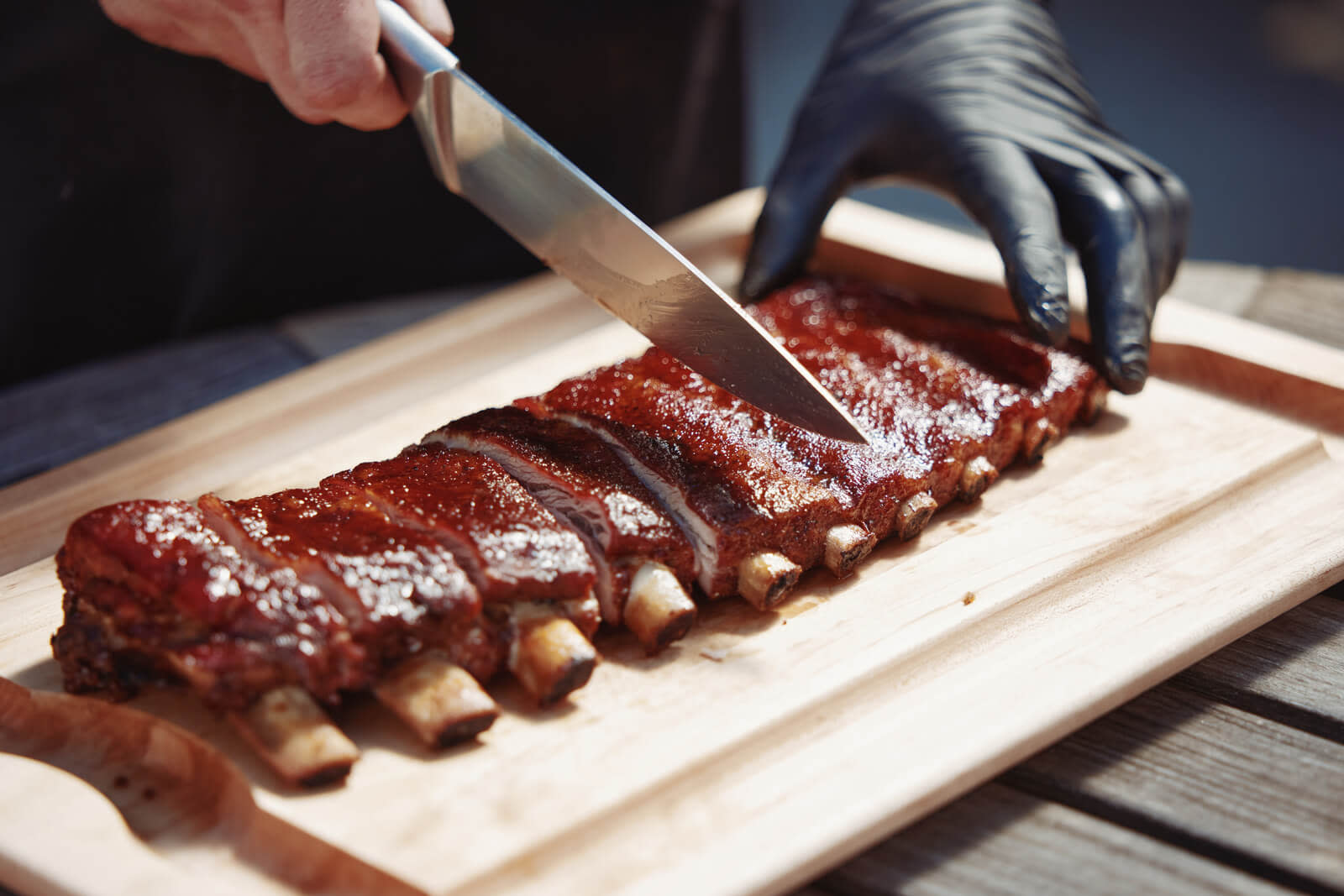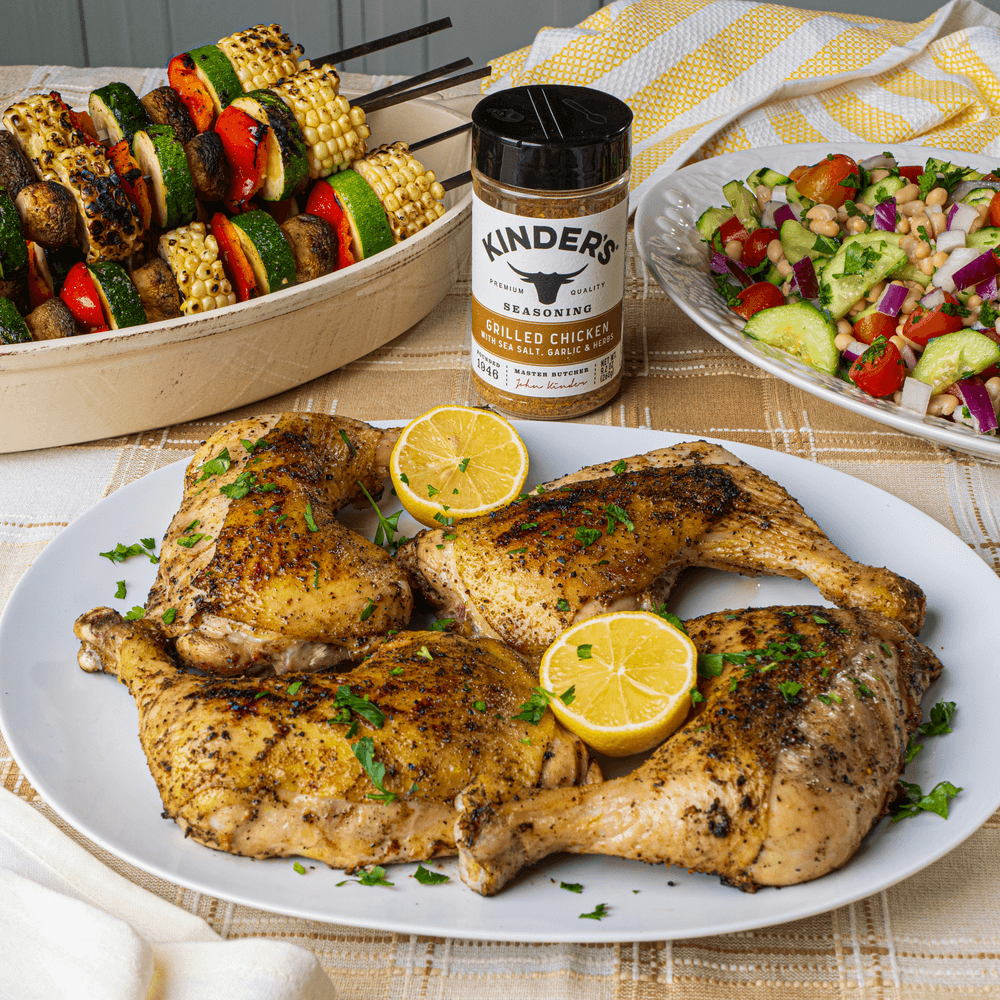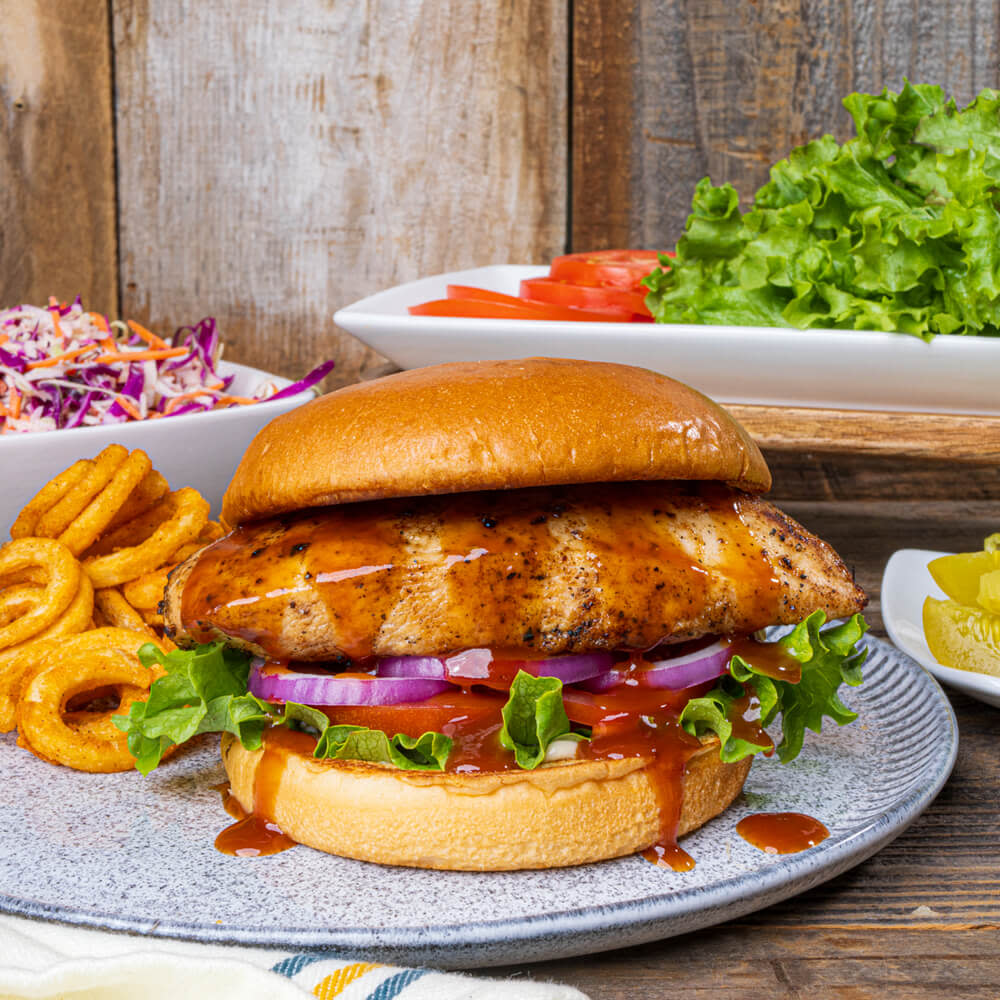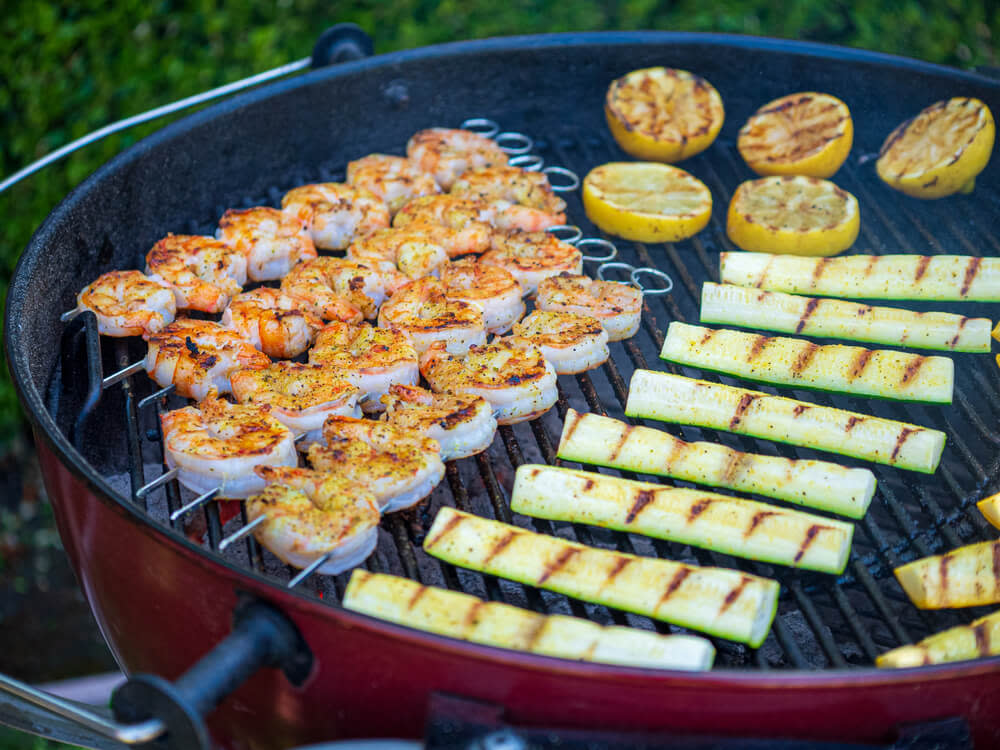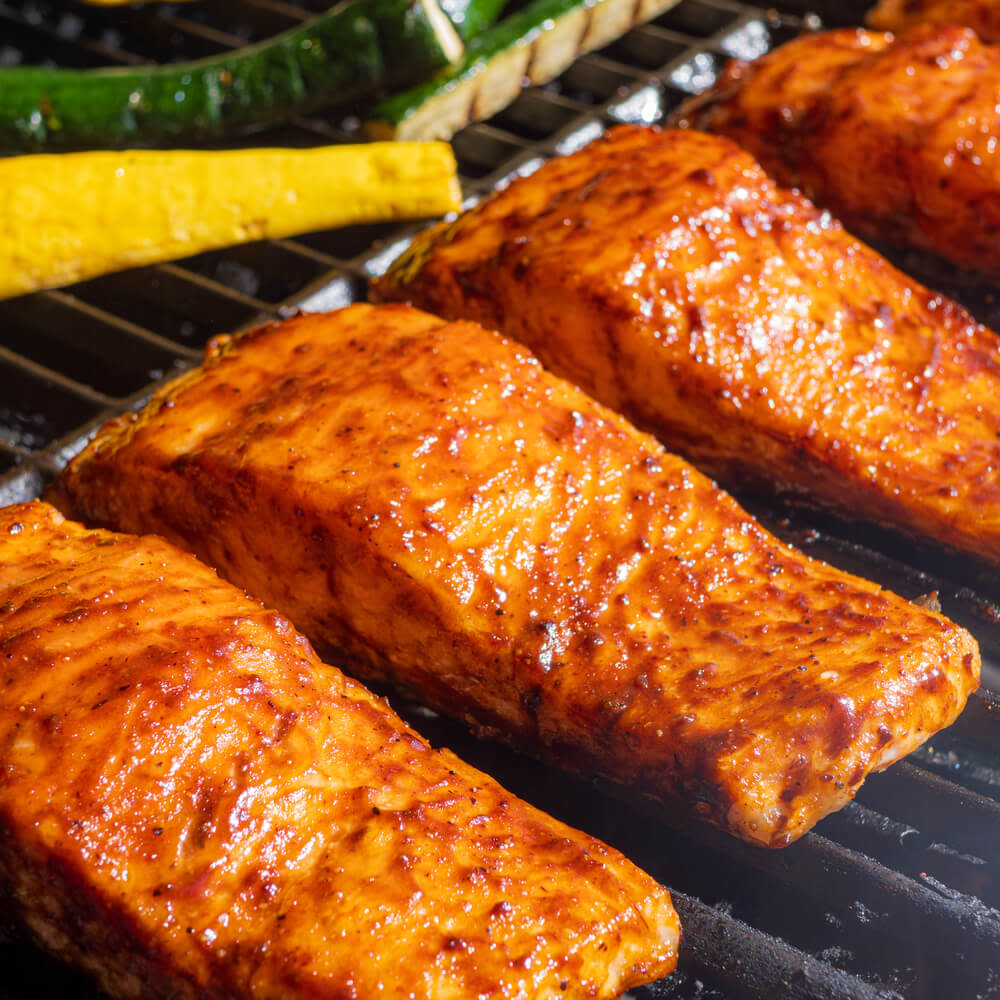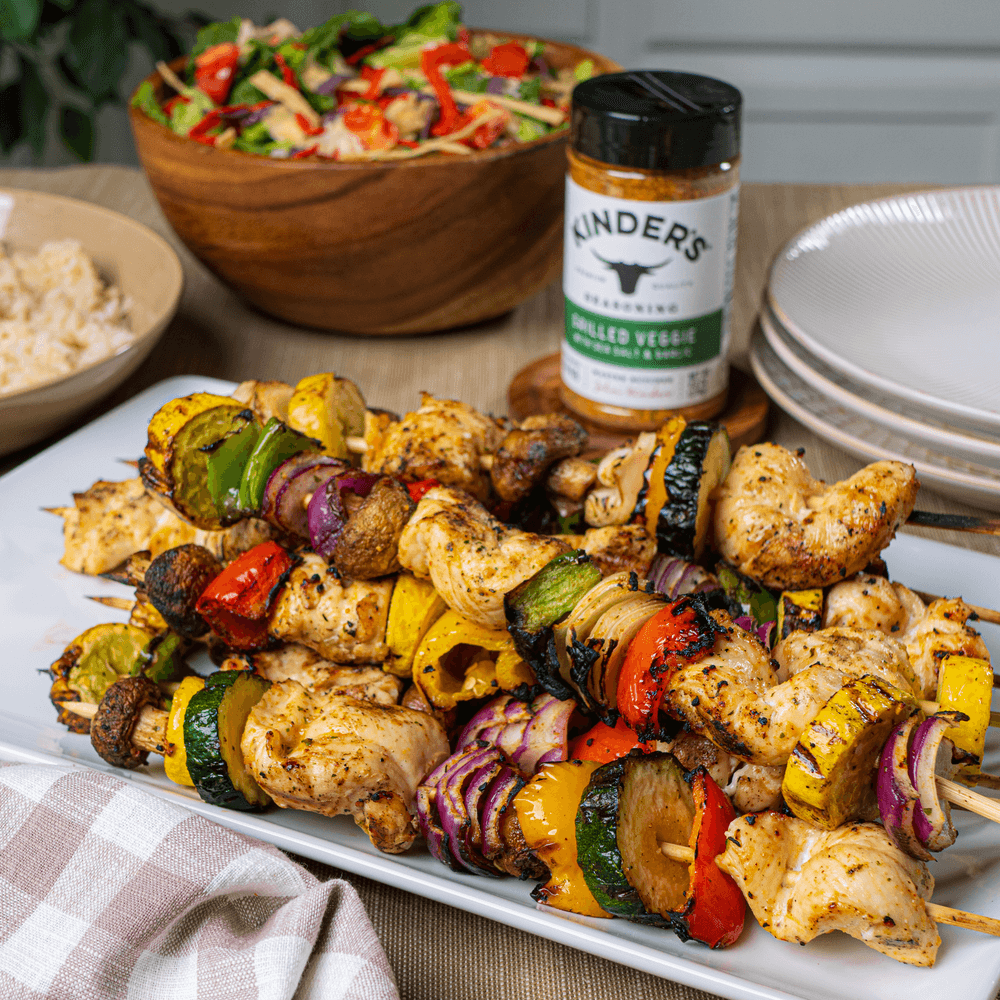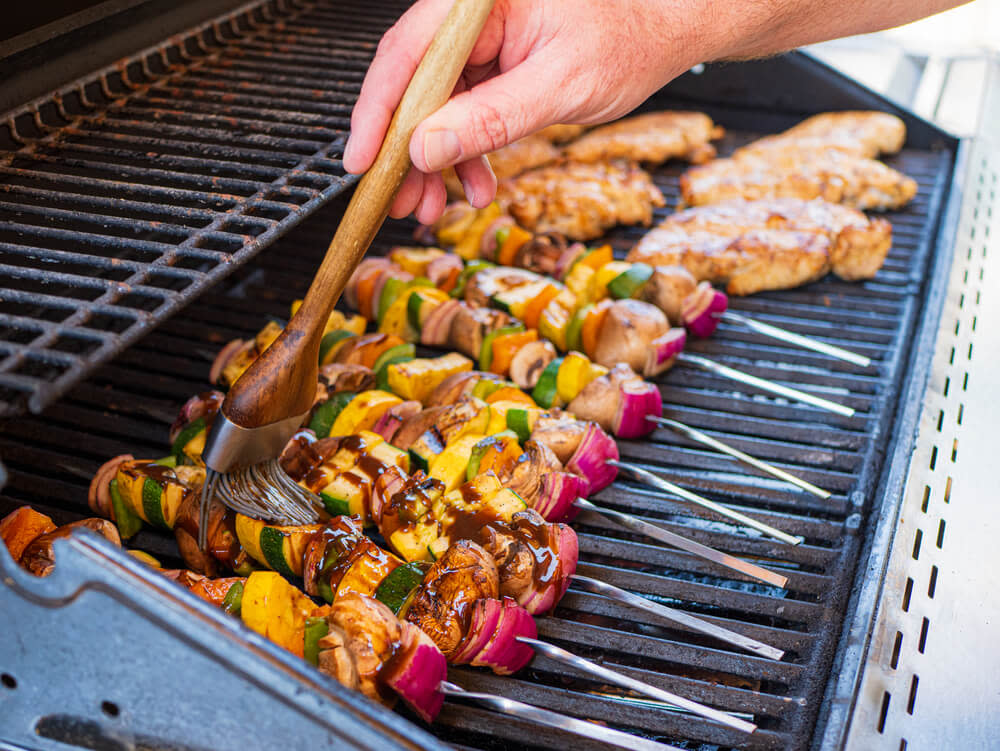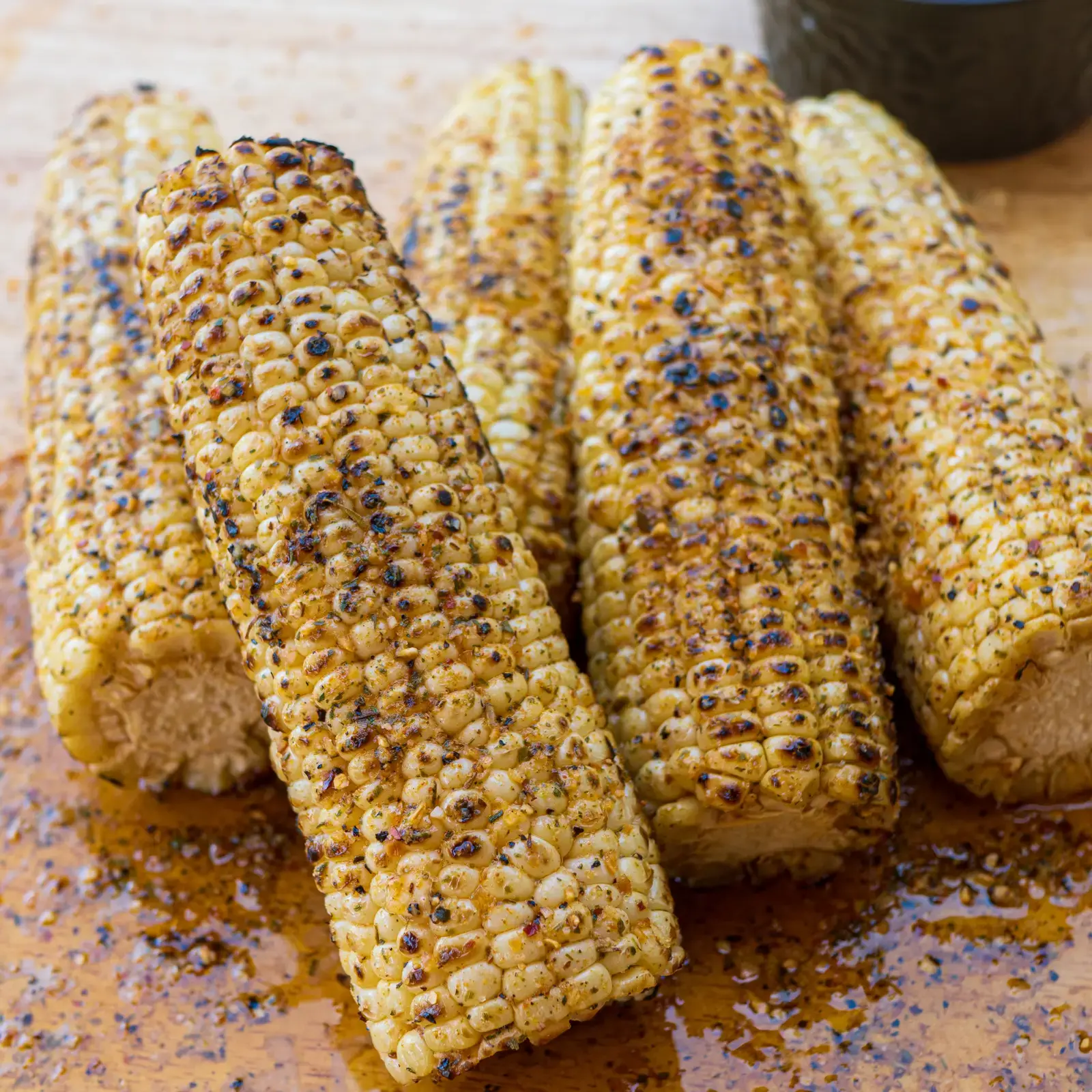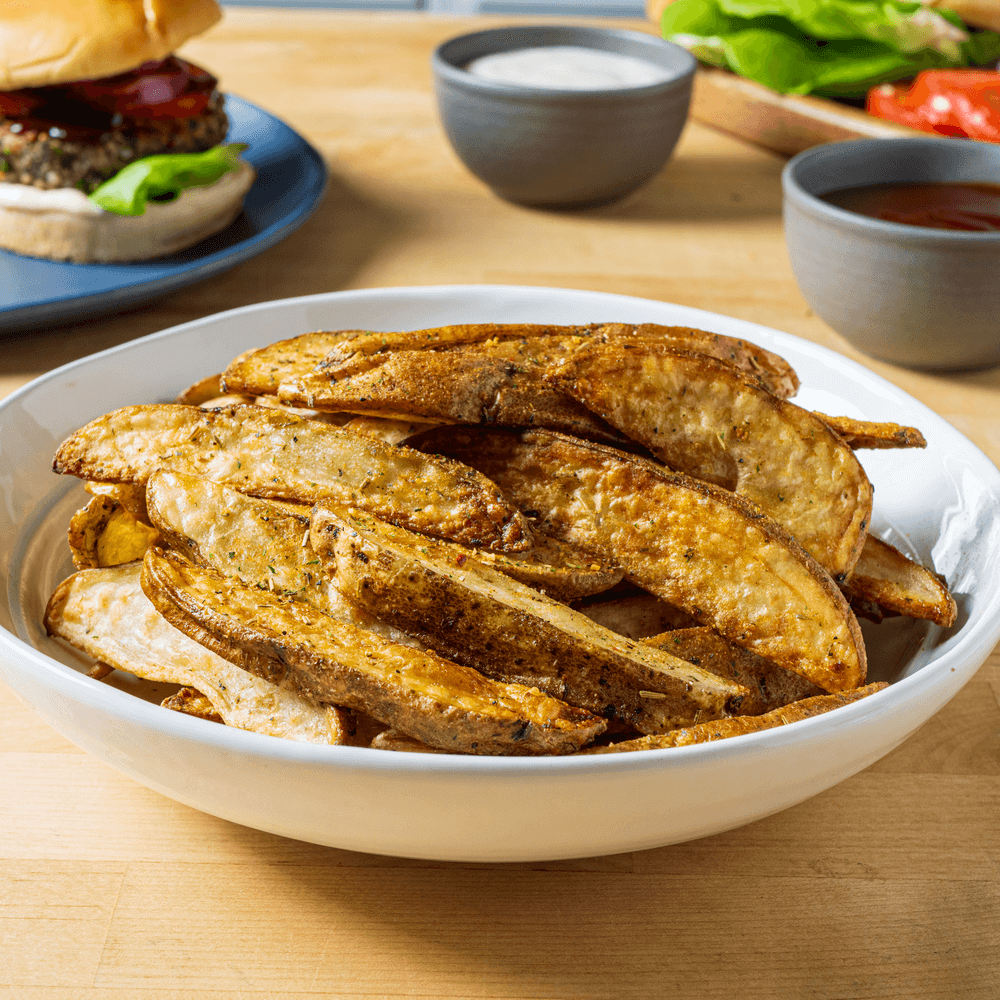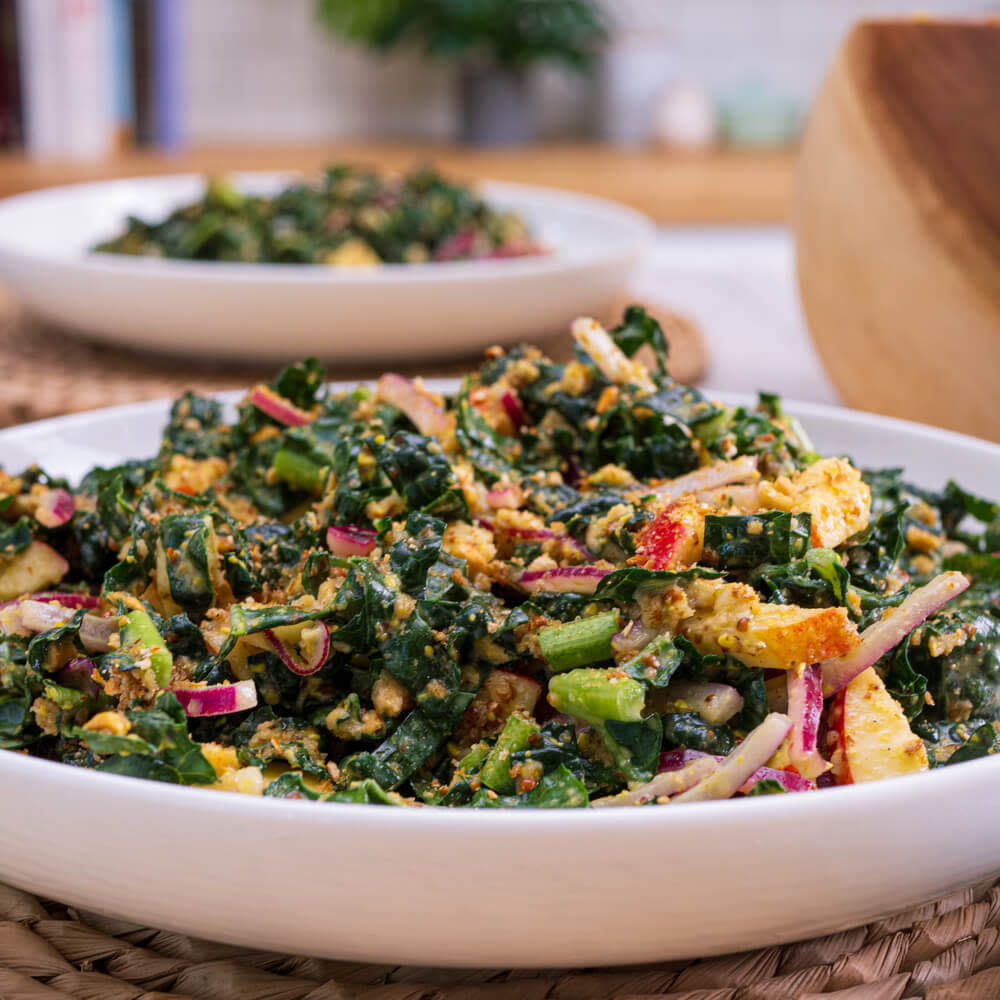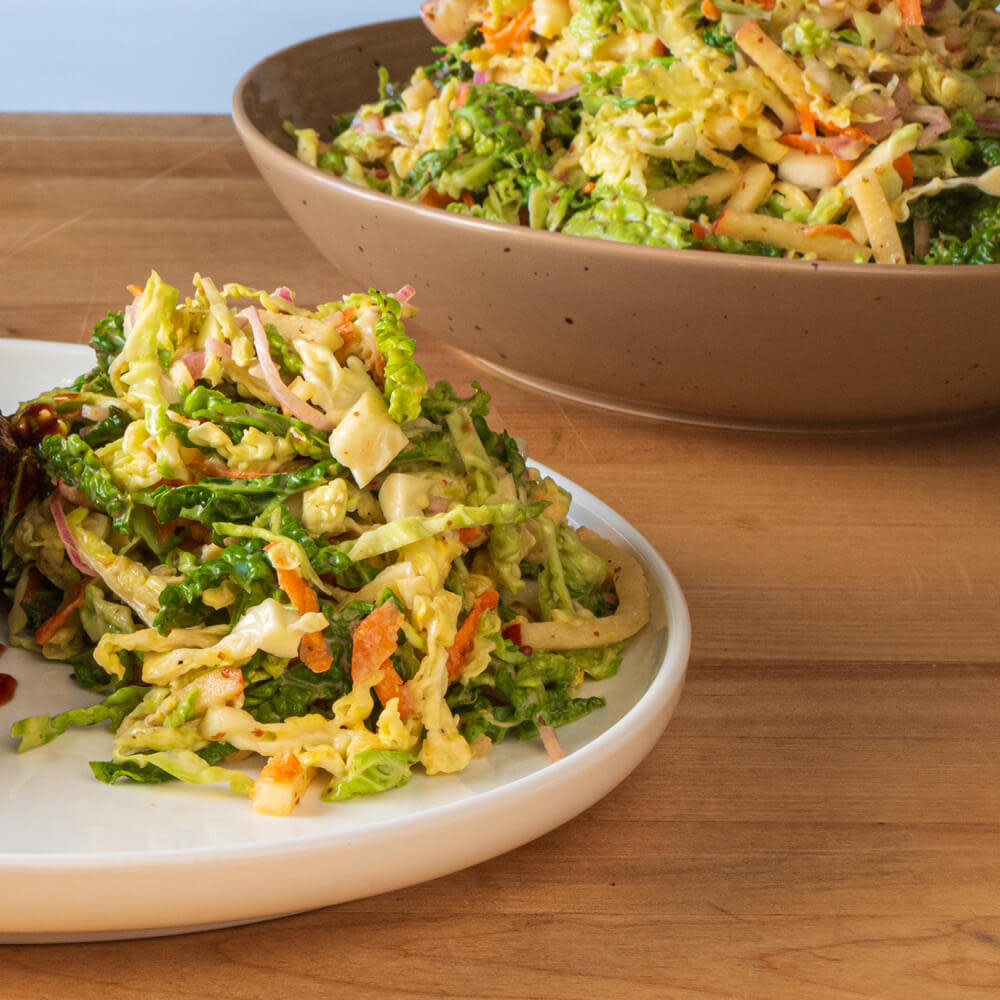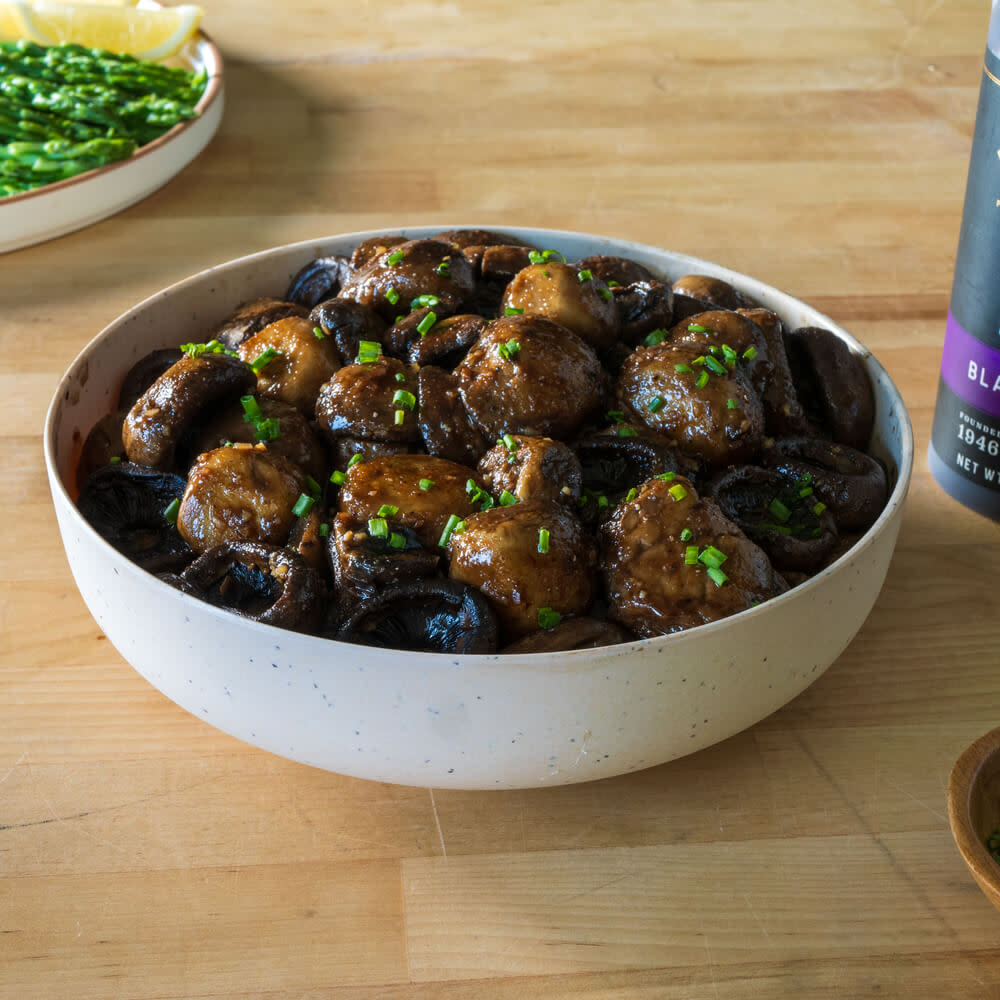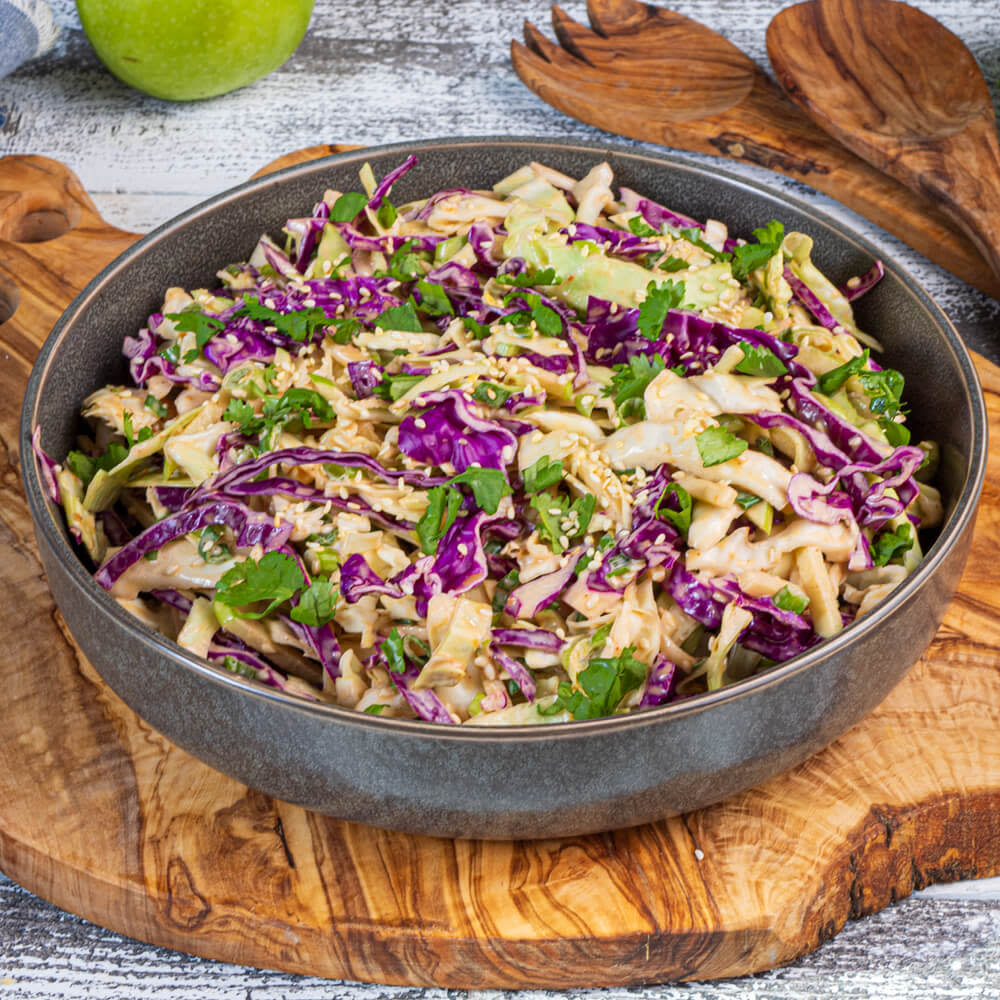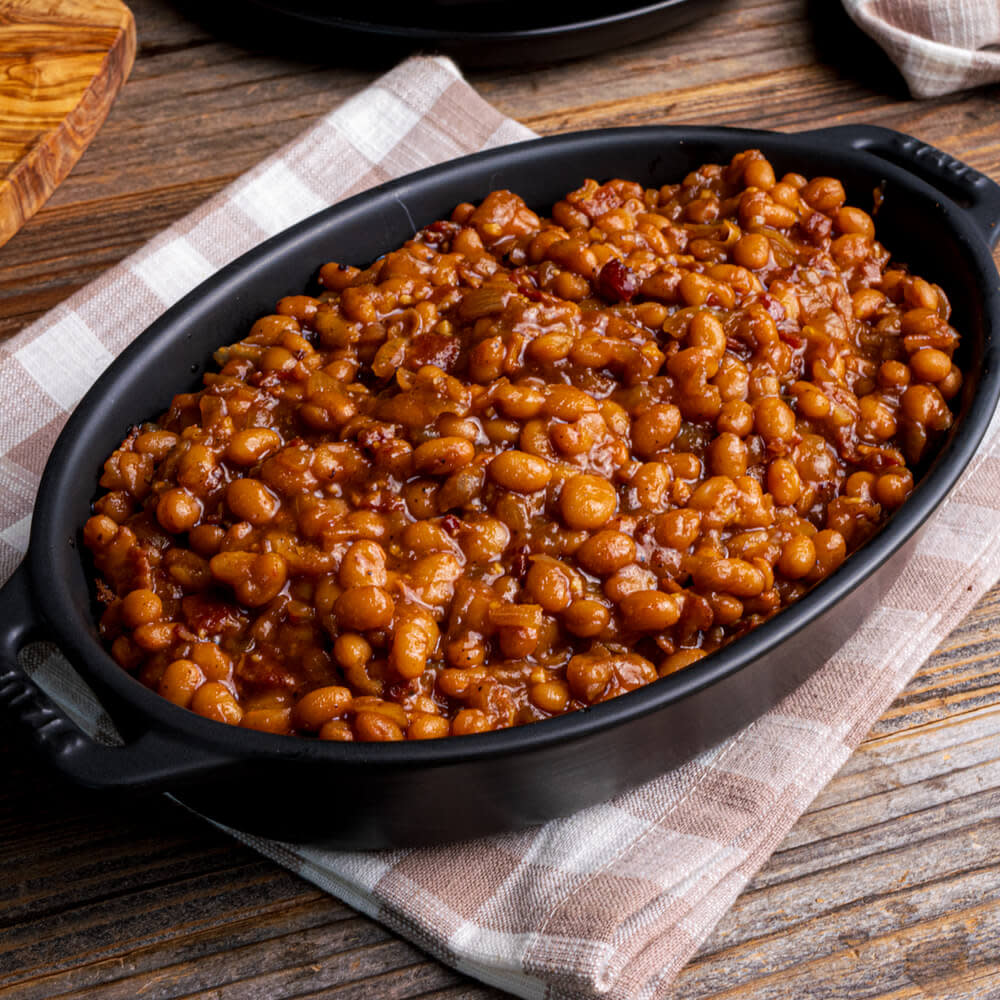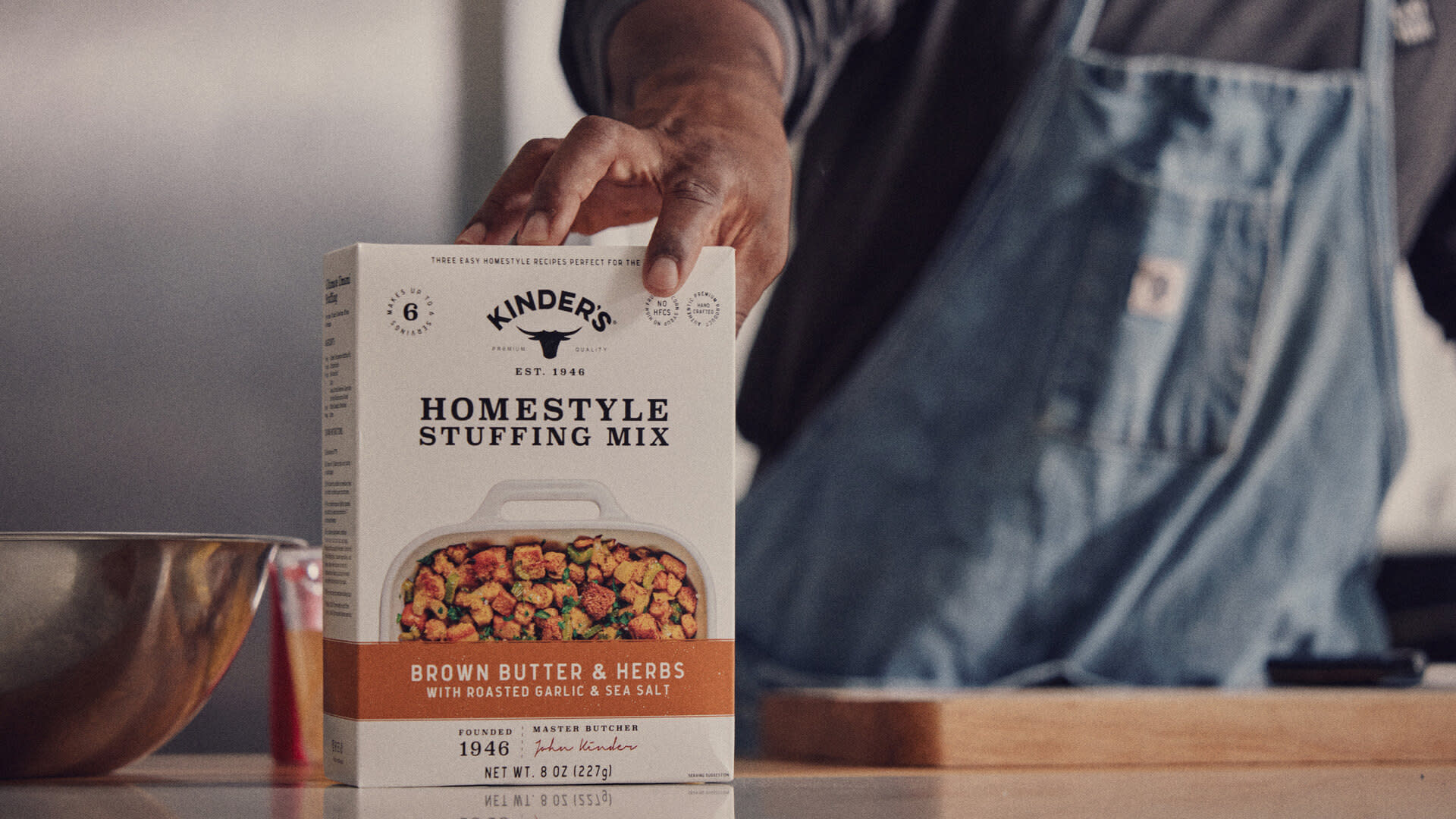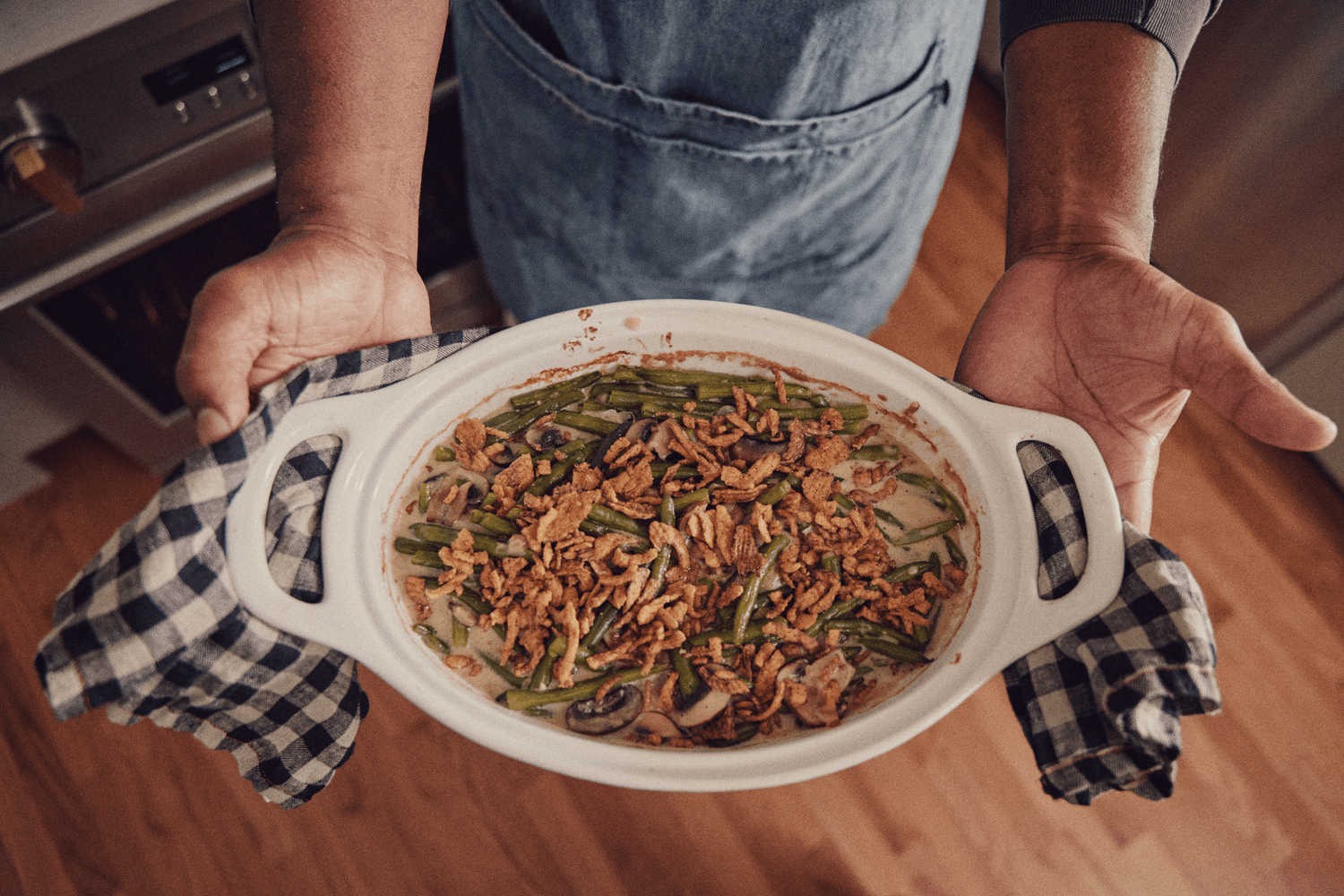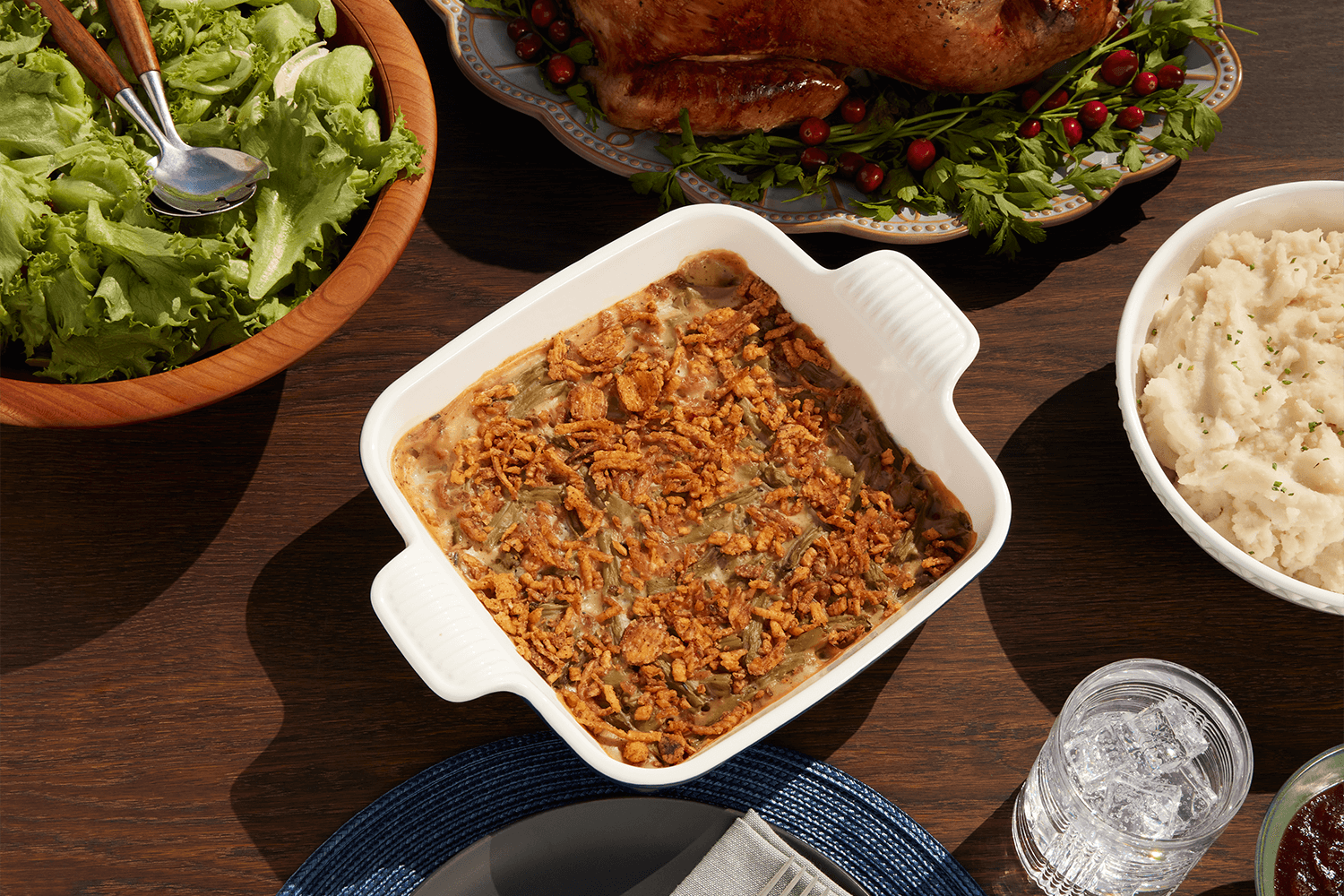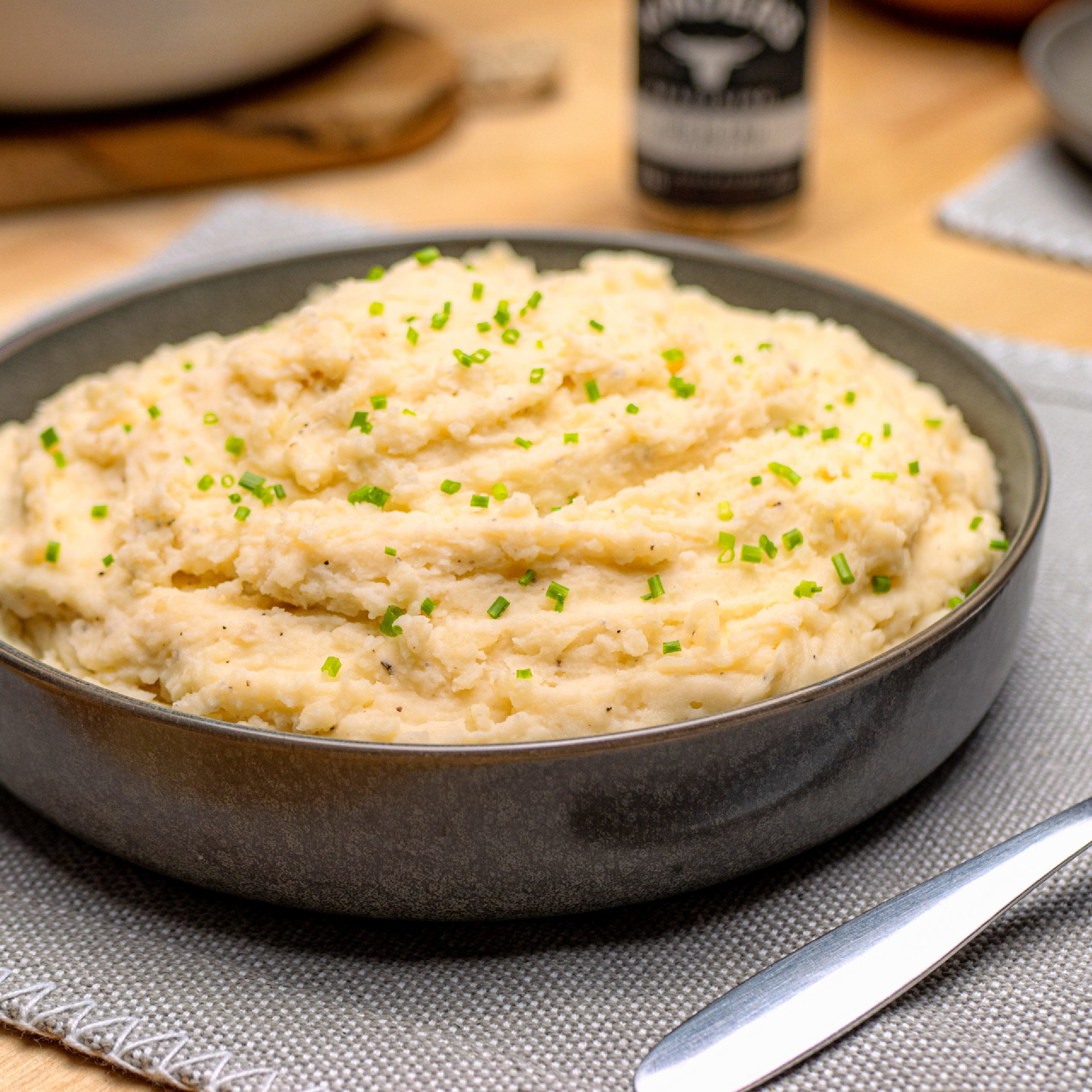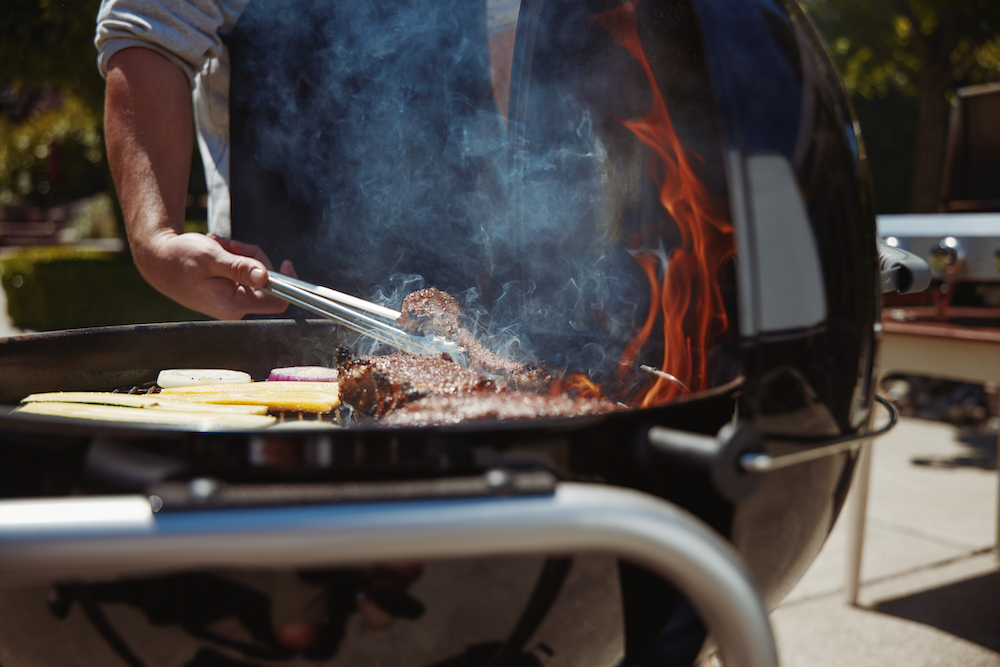

Grill Guide
We’ve been obsessed with flavor since 1946. After decades of trial and error, we’ve learned a few tips, tricks, and tasty ideas to help you make some seriously good food. So, whether you’re wondering how to light the coals, looking for your next show-stopping recipe, or aiming to perfect that sear, you’re in the right place.
Jump To RecipesBring the Flavor
Recipes
Grab Your Ingredients, Light the Fire. Tap any icon below to dive straight into tips, recipes, and Kinder’s product pairings for beef, pork, chicken, seafood, or veggies.
Let’s be real, a perfectly grilled steak or a classic burger is a thing of beauty. It’s that timeless, satisfying flavor that makes any backyard feel like the best steakhouse in town. You are the undisputed heavyweight champion of the cookout.
Oh, grilled chicken, there’s nothing quite as classic as you. You’re the trusty friend that shows up ready for anything, whether it’s a smoky dry rub or a sweet, sticky sauce. There’s nothing better than that perfect char and juicy, flavorful meat.
You’re the unsung hero of the grill, the sleeper hit of the barbecue. A little bit of heat transforms you, bringing out a sweetness and a smoky char we just can’t get enough of. Honestly, sometimes we’re more excited for you than the main event.
Simple Sides, Big Flavor
Grilling Tips
Alright, you’ve got the basics down, and you’re ready to really dial things in. This is the fun part, where you start turning those good cookouts into great ones. The number one rule we’ve learned is that the real secret to grilling is… it depends! Every piece of meat is different, every grill has its quirks, and that’s okay. These aren’t strict rules, they’re tips we’ve learned over countless cookouts that will help you think more like a pro and get awesome results.
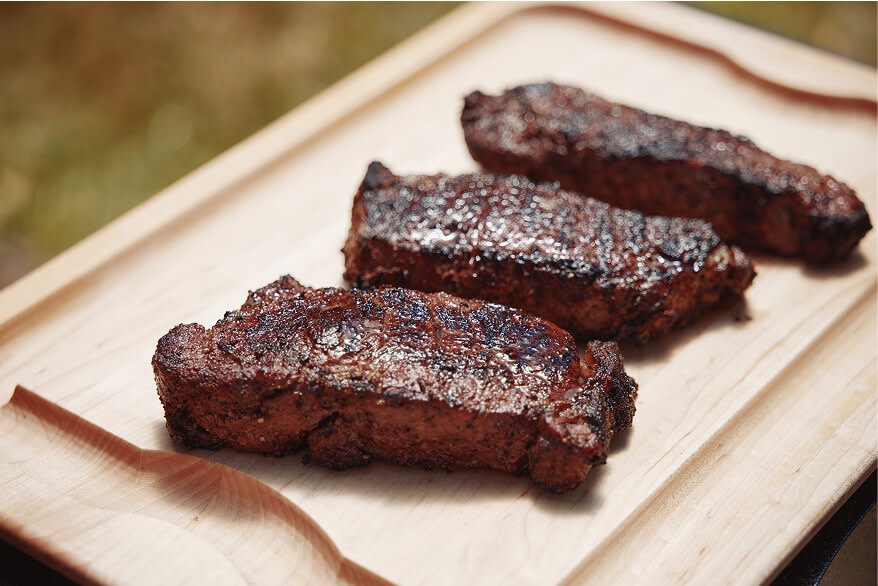
The Art of Resting: Patience is Delicious
We get it. That steak is off the grill, it smells incredible, and you want to dive right in. But if you can wait just a few minutes, we promise it’ll be worth it. While your meat cooks, all the juices get pushed towards the center. Slicing into it immediately means all that flavor pours right out onto your cutting board. Resting lets the muscle fibers relax and allows those juices to redistribute back through the meat, making every bite juicier and more flavorful. Someone once said good things come to those who wait. They were right.
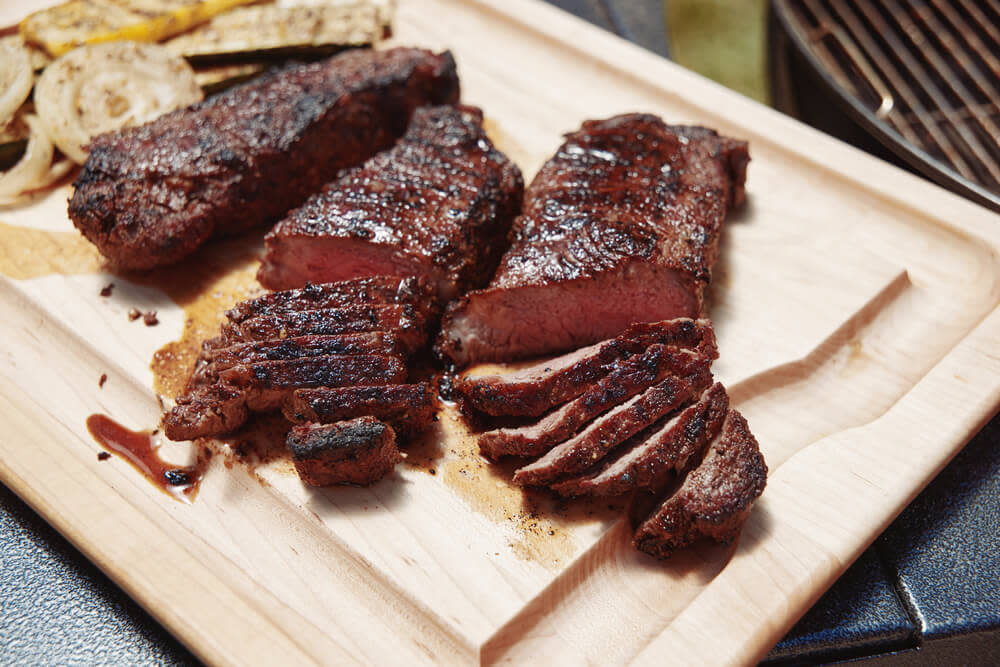
The Magic of Carry-Over Cooking
Here’s a little secret that’ll change your grilling game: your food doesn’t stop cooking the second it leaves the heat. Think of it like a train pulling into a station—it doesn’t just stop on a dime. That heat keeps working its way to the center, and this “carry-over cooking” causes the temperature to keep going up. It can be as little as 5° or as much as 20° or more. The larger the piece of meat, the more carry over cooking happens.Now, for the legal stuff: The USDA says to cook things like chicken to 165°F (see temps here). And this is important to know because that is the temperature that is considered safe and when bacteria such as
E.coli are killed in your food in your food. We agree that you should always follow safe food practices and we also know there are multiple variables you can work with to get here.Let’s talk real life. If you pull that chicken at 165°F, it’s going to be 175°F by the time you eat it, and likely dry. Pulling it a little early (say, 160°F) and letting it rest allows carry-over cooking to finish the job for you, landing you at that perfect, juicy, and safe temperature. (Just remember to grab that handy instant read thermometer to check you final temp.)
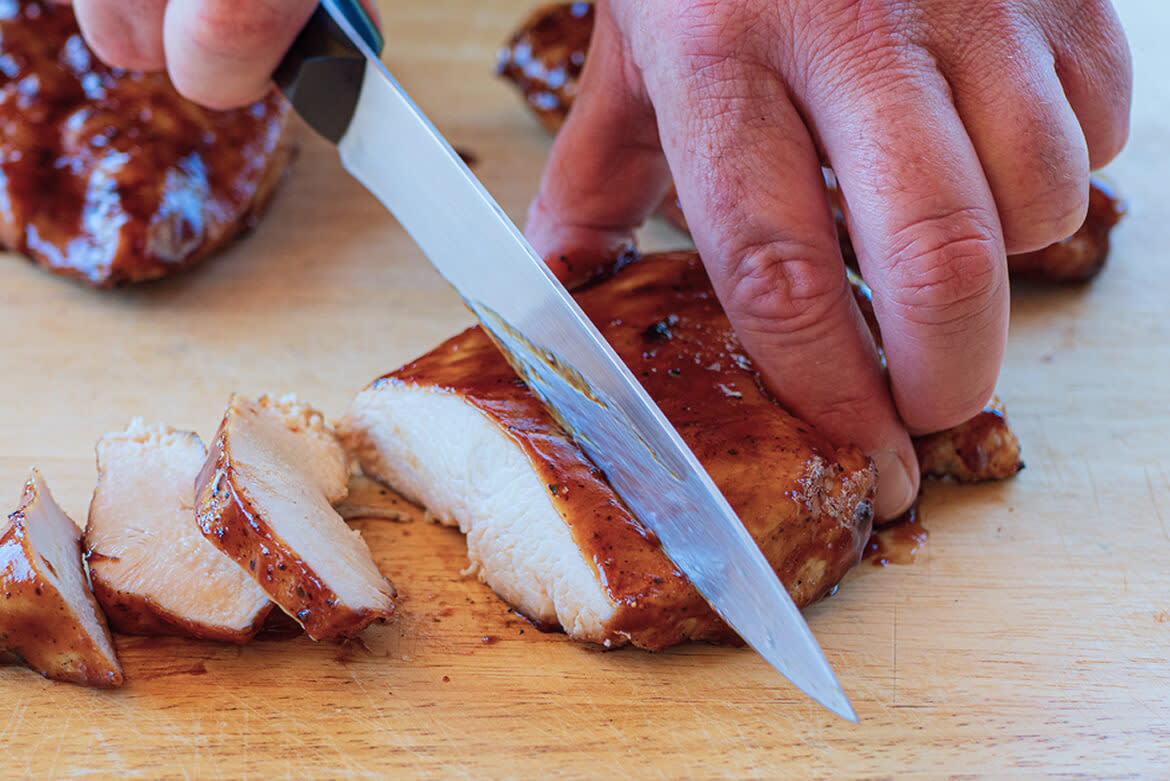
To Brine or Not to Brine?
What even is a brine? In the simplest terms, it’s a saltwater bath for your meat. The salt helps the meat hold onto more moisture during the cook, basically insuring it against drying out. It’s fantastic for leaner cuts like chicken breasts and pork chops that don’t have a lot of fat to keep them moist. For heartier cuts like a ribeye or beef brisket, it’s usually not necessary since they have enough fat to do the job. You can also add other flavors like sugar, herbs, and spices to the brine for an extra layer of deliciousness.
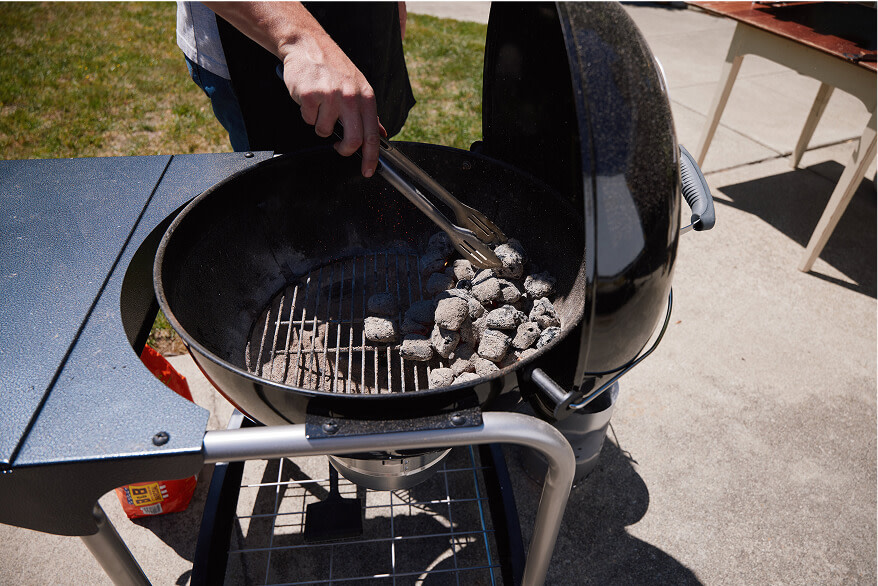
Direct vs. Indirect Heat: Your Grill's Two Superpowers
Think of your grill as a two-in-one appliance. Piling your coals on one side or only turning on half your gas burners creates two cooking zones. Grilling right over the flame is direct heat—it’s your high-heat frying pan for getting that beautiful sear and char. The other side is indirect heat—it’s your oven for gently cooking things through without burning the outside. A perfect steak gets a quick sear over direct heat and then finishes on the indirect side; a whole chicken cooks most of the way on the indirect side and gets crisped up over direct heat at the end. Master these two zones, and you can cook practically anything.
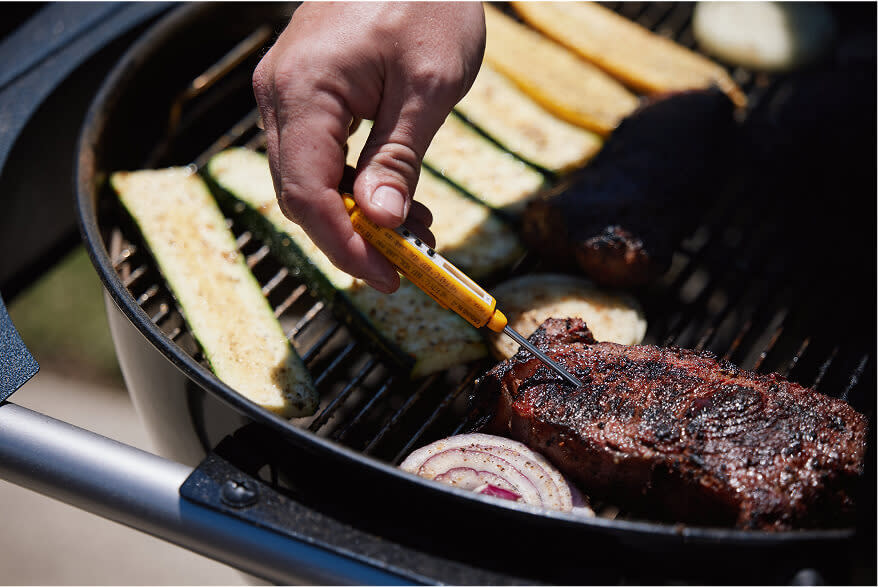
It's Not Just About Time
If you’re just grilling by time, you’re flying blind. A recipe might say “grill for 5-7 minutes per side,” but what does that really mean? Your grill might run hotter, the steak might be thicker, the wind might be blowing… you get the idea. The single best tool for leveling up your grilling is a good instant-read thermometer. It takes all the guesswork out of the equation and tells you exactly when your food is perfectly cooked. After a while, you’ll start to get a feel for it—how a medium-rare steak springs back when you poke it—but until then, let the thermometer be your guide.
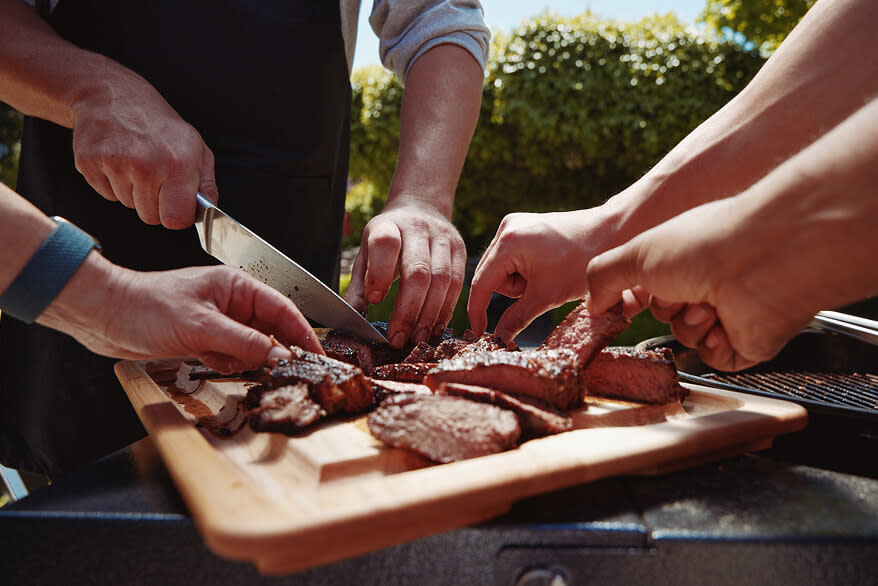
Grab Good Friends, a Cold Bev, and a Solid Playlist
Look, at the end of the day, this is all supposed to be fun. Did you burn the chicken? That’s okay, you just got a great story to tell at the next party. Order a pizza, laugh about it, and try again next weekend. The whole point of firing up the grill is to slow down, hang out with people you like, and enjoy the process. If you had a good time making it, you’ve already won. The delicious food is just a bonus.

